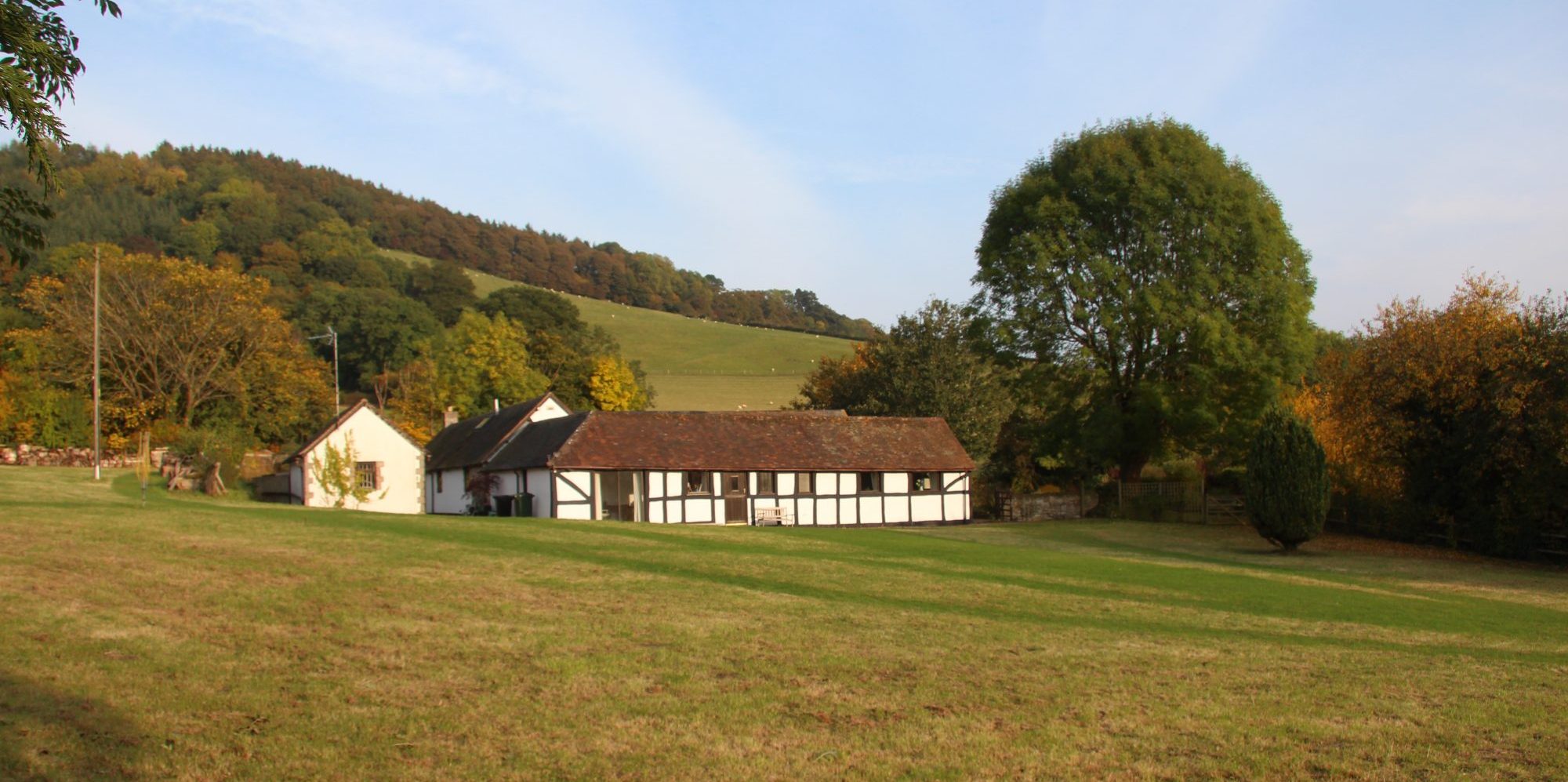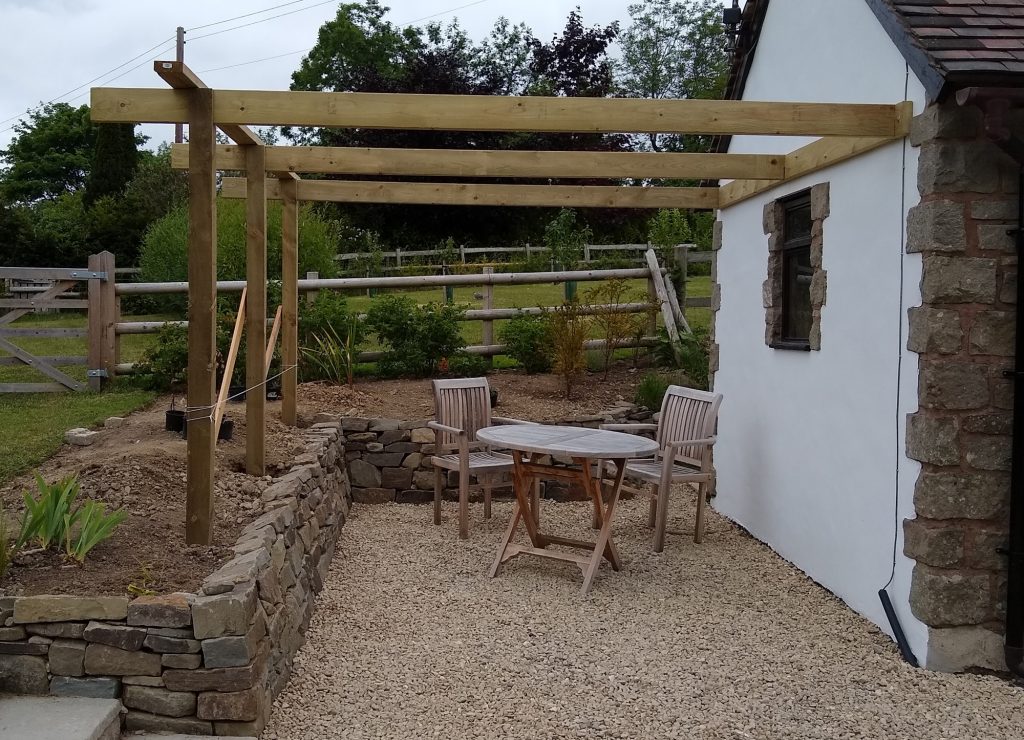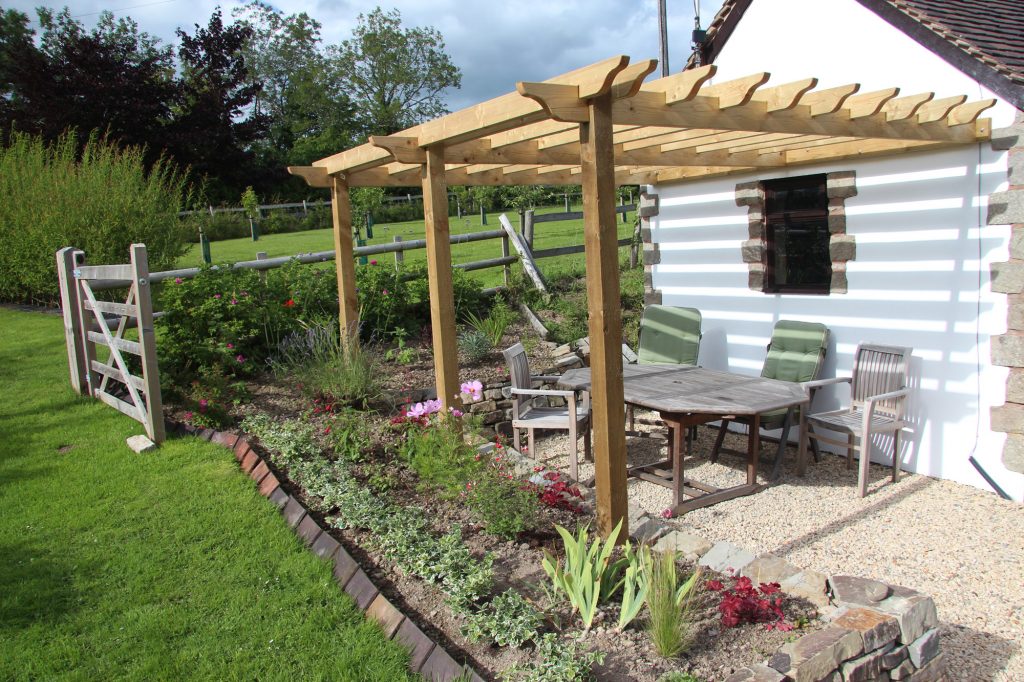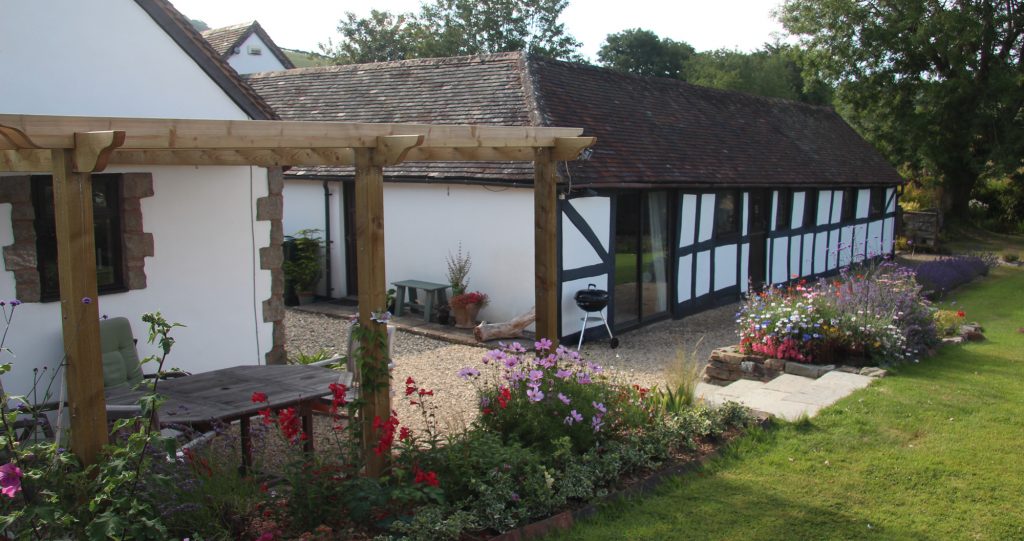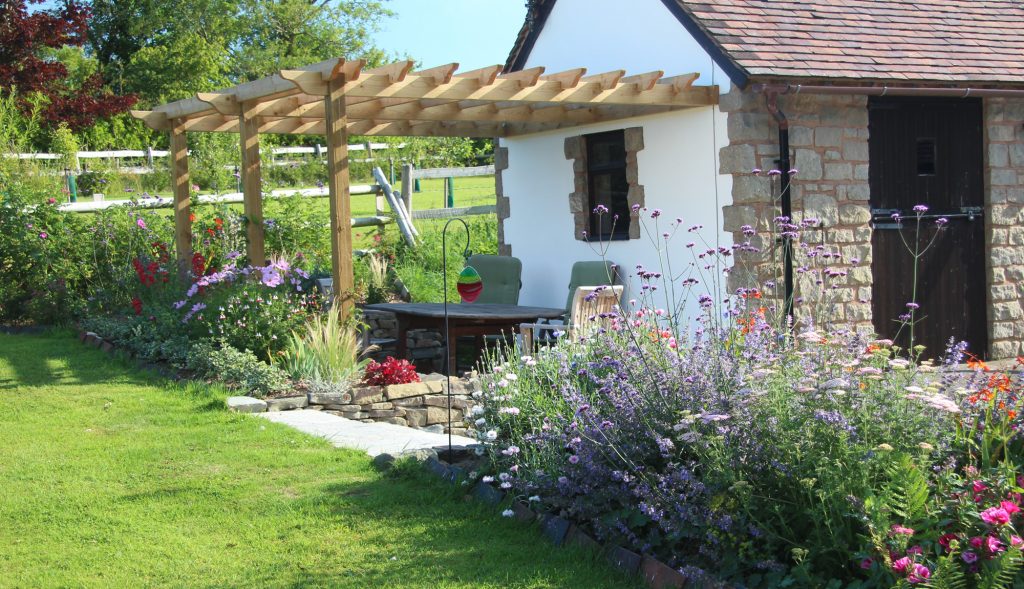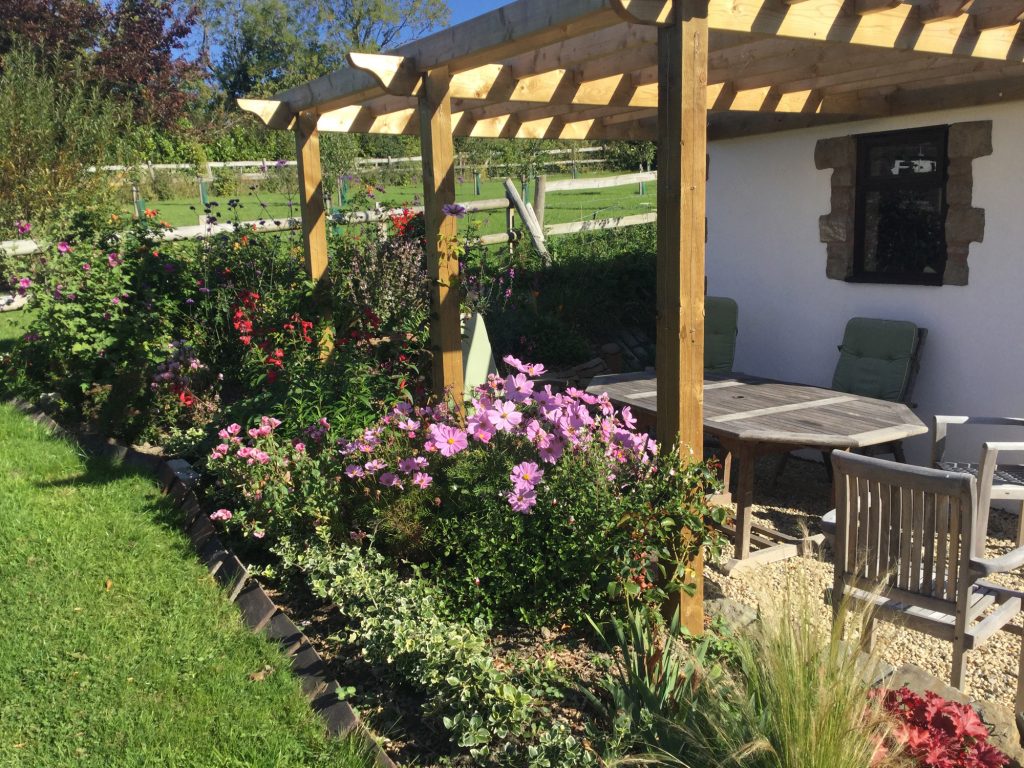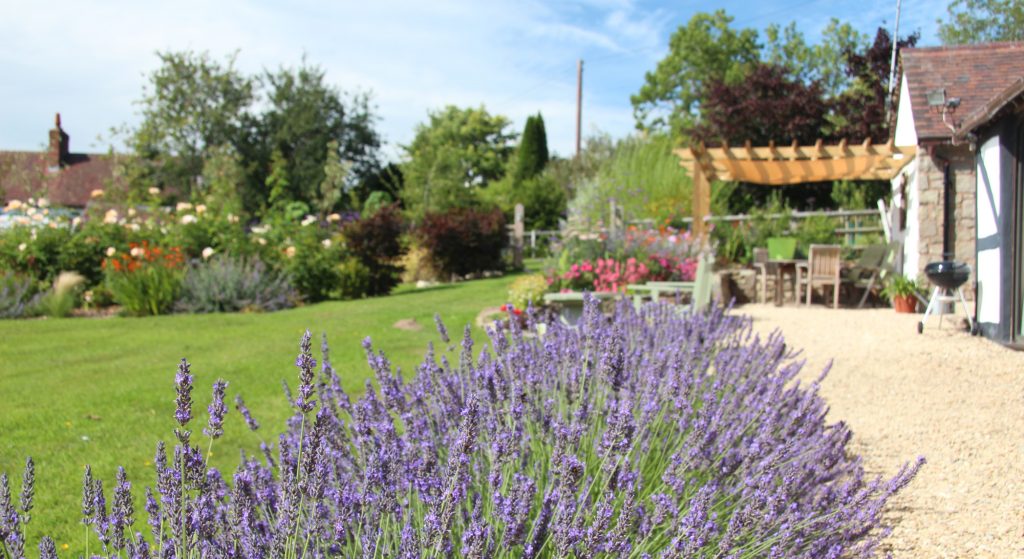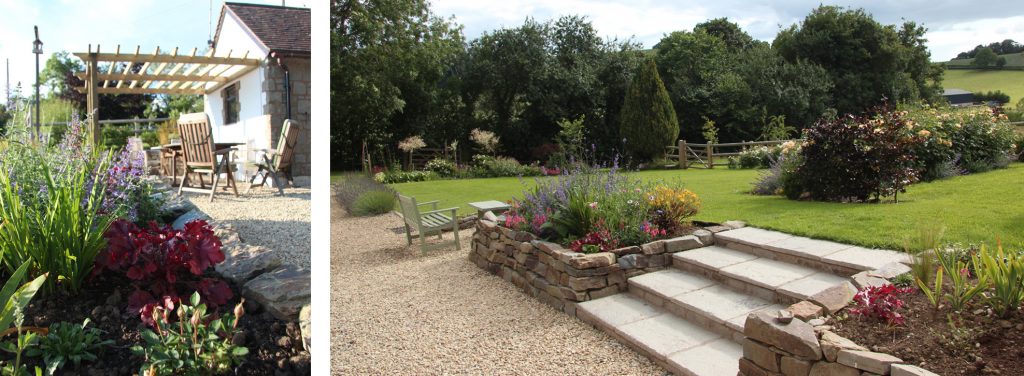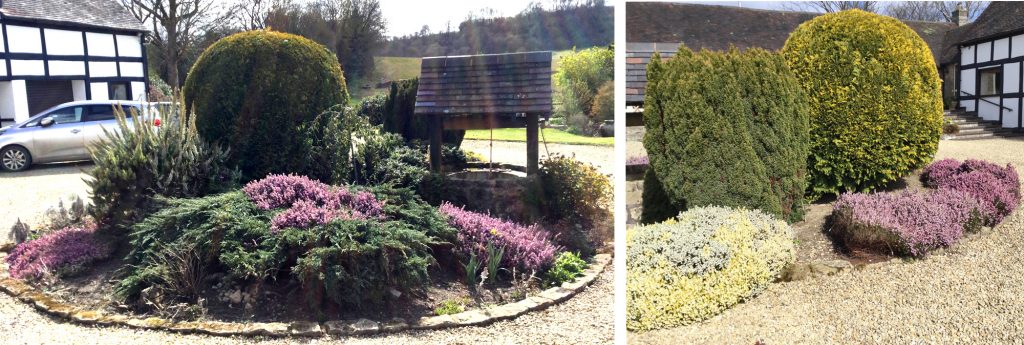
The Well Bed is circular, about 5m in diameter, edged with the local stone, in the centre of the courtyard at the front of the house. The bed had established conifers and lots of heathers – several varieties which flowered at different times of the year. Not being a huge fan of heathers, I have come to appreciate them, especially the one which spread out on the southern side of the bed facing the road, with purple flowers from December through to May – a plant in the right position to earn its keep. But it was the side facing the house, which we looked out at daily, which was disappointing. A large blue‑green prostrate conifer spread out, with a vigorous dark green heather pushing up amongst its branches, creating a dark and unattractive sight. I had tinkered with this bed, planting annuals, bulbs and perennials around the juniper – but my efforts of improvement were thwarted!
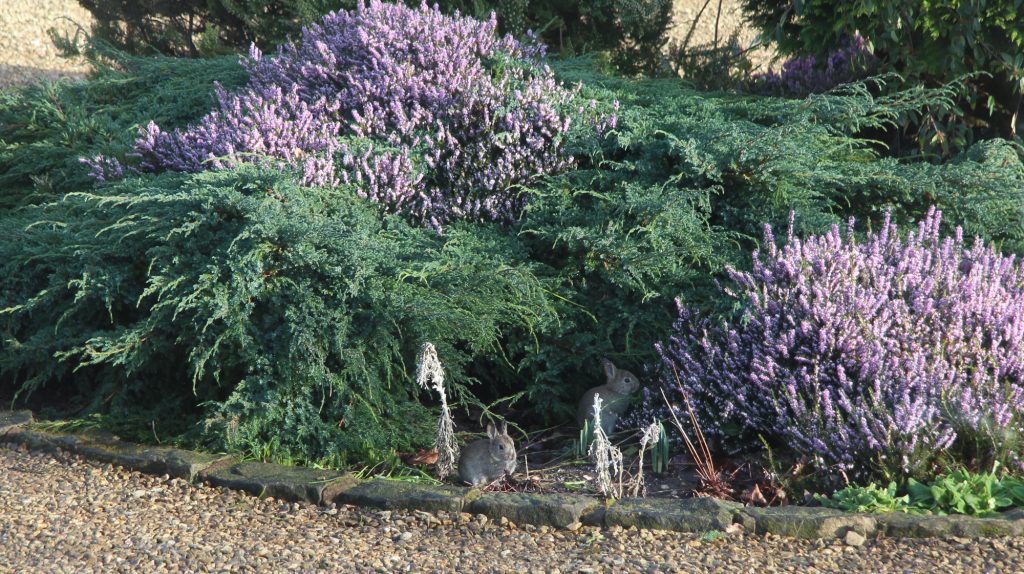
Yes, rabbits. I had been aware of what appeared to be rabbit holes in the Well bed when we arrived – I dug them over and placed stones over them. I enjoyed watching the occasional garden visitor but in 2020 it got out of hand. In January four young baby rabbits were seen regularly emerging from underneath the juniper – the shoots from the bulbs, the heucheras and cinerarias I had so carefully planted gave them plenty of sustenance. They gradually got braver venturing to other beds, making short shrift of the small hebe plants I had carefully nurtured from self-sown seedlings. After four weeks or so they were seen less often, and fewer of them – perhaps predated or at least left the garden? I disturbed the holes I could reach, threw rubble under the juniper. Done. Oh no. Towards the end of February another litter emerged, this time at least five were seen. Again, the damage they did, this time to primroses and geranium shoots, was exasperating. The trouble with rabbits is that they breed – like rabbits! By the time the third litter appeared I’d had enough. The juniper and the rabbit warren underneath had to go.
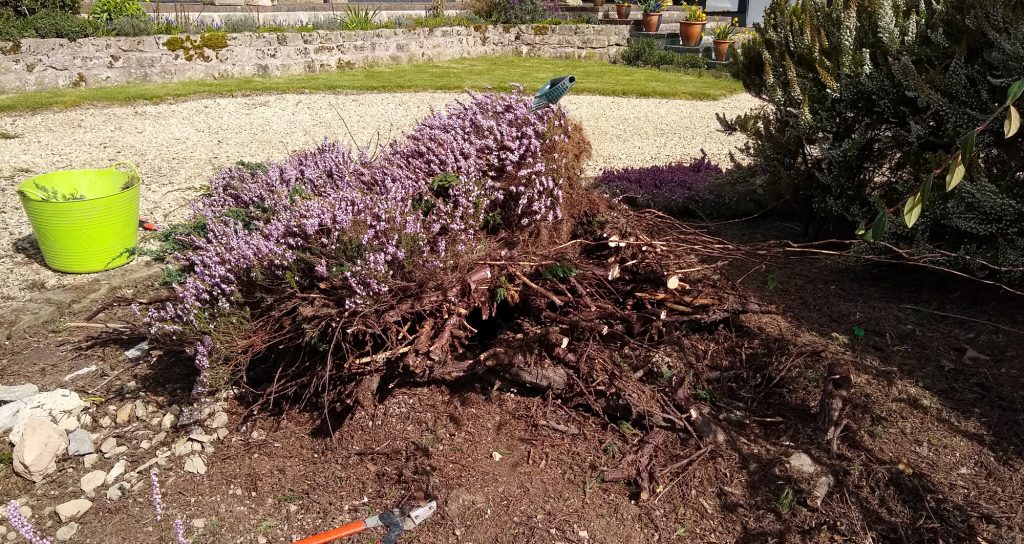
The juniper was fully mature. I set about cutting the branches back, hard work – the branches were thick and gnarled – and painful from the vicious spines amongst the needles. Gradually it was removed, and the chainsaw used to get as much of the root out as we could; it was piled up to dry before making a bonfire much later in the year. As we worked, we finally uncovered the rabbit holes – several of them.
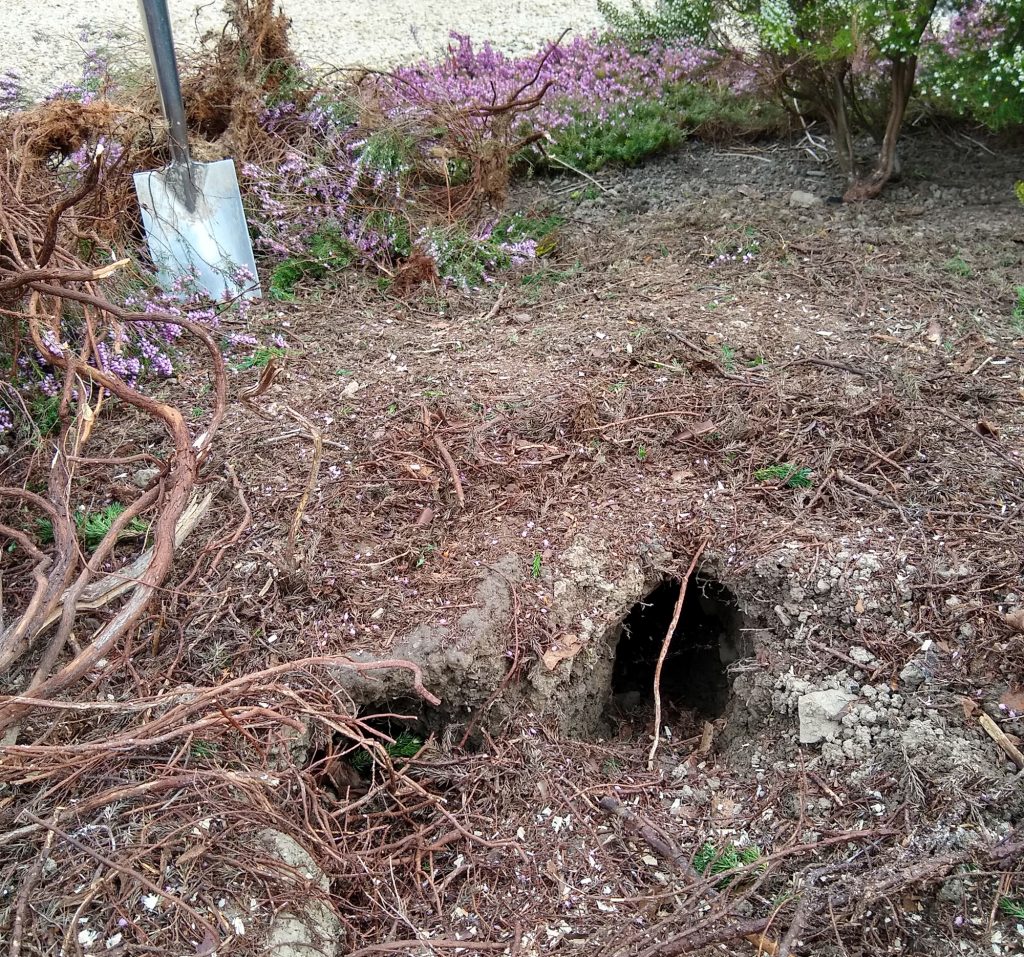
Fearful that I might be burying the next generation – but hoping that the mother would have been scared off by our work – I dug them over, checking for other entrances elsewhere in the bed. My intention was to retain some of the heather, I cleared the bed, dug it over, spread some compost. On the day we finished clearing it, we were amused to see, just as the light was failing, a youngish rabbit, looking about himself in a rather bemused fashion: ‘I’m sure home was here somewhere…?’. The following morning a much larger rabbit – the mother I assume – came and sat on top of the earth. Surely, this was no longer a safe place for her to raise another litter? She looked about under the other conifers and heathers before lolloping off. Over the coming weeks I checked carefully for signs of burrows in the bed – and elsewhere around the courtyard, as presumably, I’ve just moved them on.
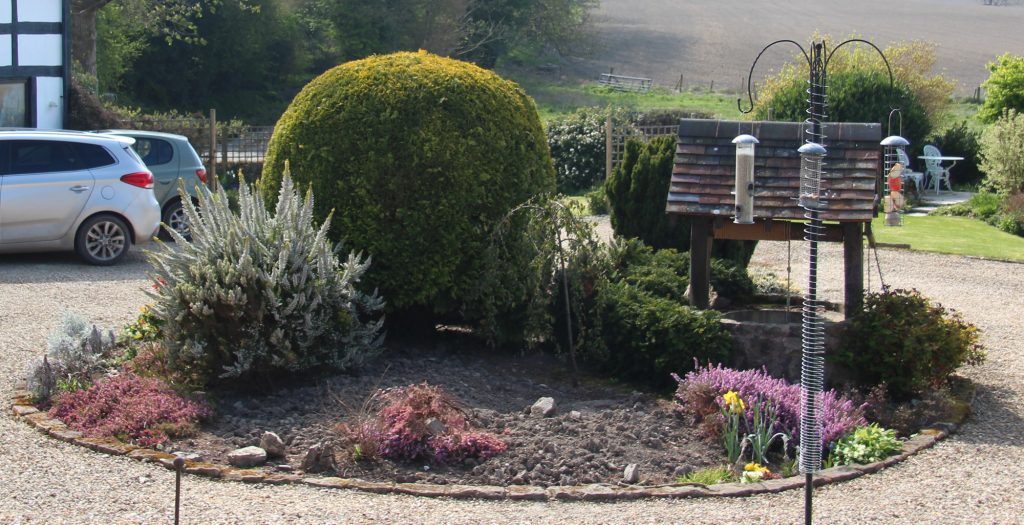
We then had to abandon the Well bed – hopefully no longer a rabbit nursery – while our attention turned to building the dry-stone wall. So, it was late May, early June when I planted up the space vacated by the rabbit warren and juniper. The heathers I’d tried to retain had died, so I had a blank bed to fill. Two small skimmias, a small pernettya, and several silver‑leafed cinerarias, all of which had been in pots over winter were planted out; a small yellow leaved fuchsia which I’d planted two years previously, but which had struggled beside the juniper now had some space. The heucheras despite the rabbit damage had recovered as had the primroses. I planted my usual perennial stalwarts: verbena bonariensis, red valerian, hypericin tutsan, sedum spectabile, lady’s mantle, creeping diasca. Plus cornflowers and annuals cosmos and salvia (again care of my daughter-in-law). Then from long willow prunings, I constructed a wigwam, which provided a somewhat feeble support for some equally feeble (late‑sown) sweet peas. And of course I couldn’t resist including little paths: to the side of the well, and also to an improvised bench.
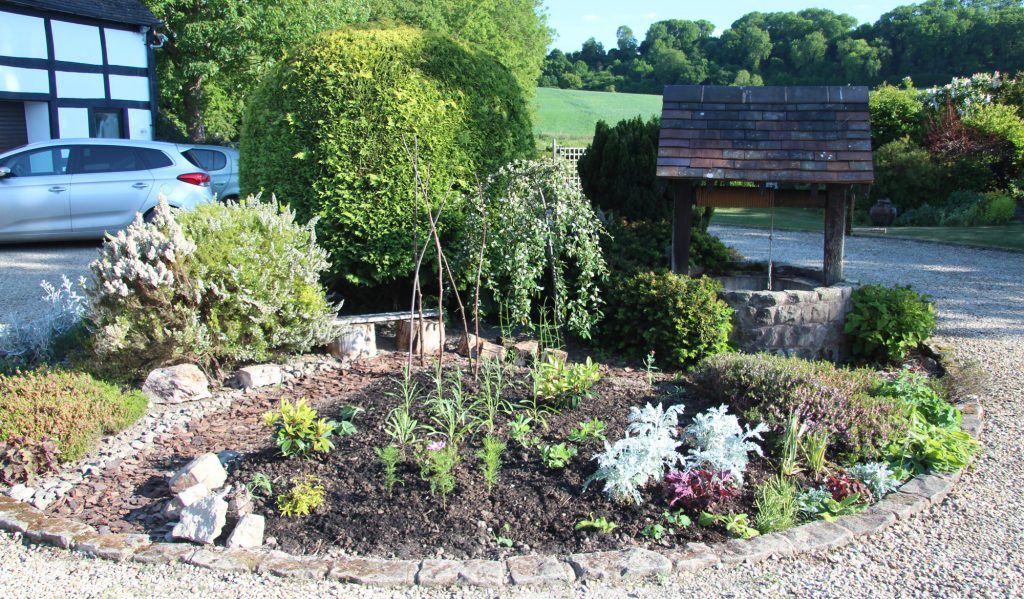
Nature again did what it does best: the plants thrived in this open, sunny – and rabbit‑free – space and within a few weeks it was crowded with flowering plants, including nasturtiums, self‑sown from those which had been devoured by caterpillars in previous years. And, of course, I succumbed to the temptation of another rose – when ordering the climbing roses for the pergola, I added The Lady’s Blush, a gentle, free‑flowering pink English Rose. At one point, we suddenly saw a rabbit hole in the middle of the bed – enough to prompt the purchase of a live rabbit trap; it was placed in situ but nothing was caught and we convinced ourselves this was just an exploratory attempt, and it has not, as yet reappeared. Of course, there is still plenty of evidence and indeed sightings of rabbits in the wider garden, but at least they are no longer living right in front of the house.
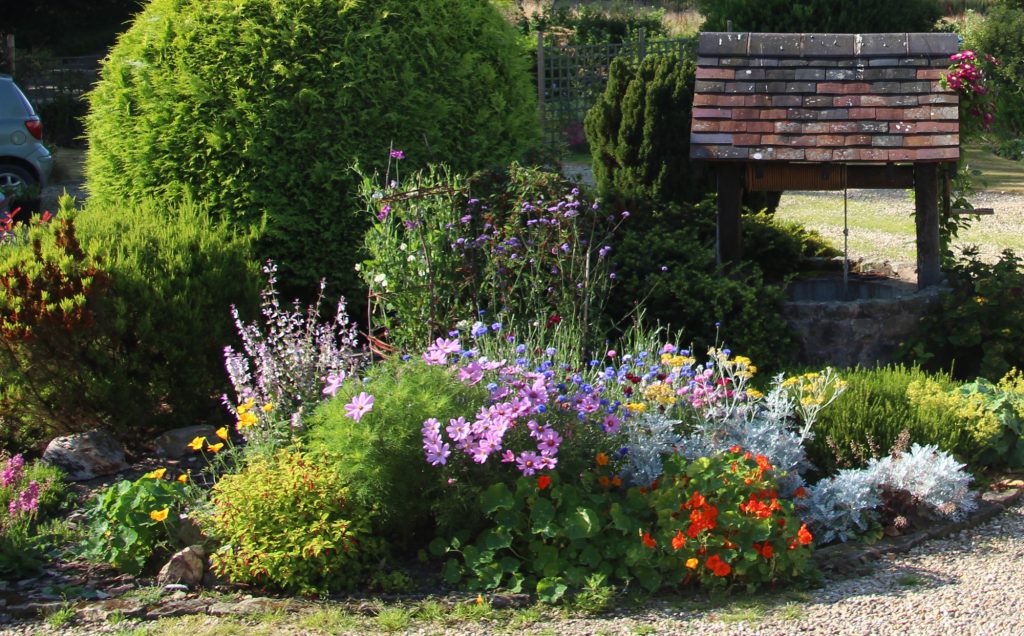
This is of course the Well bed – the stone well from which it takes its name, sits on the western side of the circular bed, protected by a timber and tiled roof. The ‘well’ however, is just a garden feature – disguising a manhole cover – not an ancient water source for farmyard animals; to some it might appear a bit twee, a bit of a cliché, but to my mind it is attractive. An established clematis grew on its western side when we arrived, which I was nervous about pruning; so far, the clematis had been disappointing, rather small dark red flowers, barely noticeable against the well roof tiles. I did some research and early in the year I made the bold decision to cut the old shoots right back down – it grew from beneath one of the more attractive golden heathers. I had expected to have killed it off – but no, new healthy shoots sprung up, and by August the well roof was clothed with a mass of good‑sized ruby-red flowers – even the colour appeared to be reinvigorated. I was delighted.
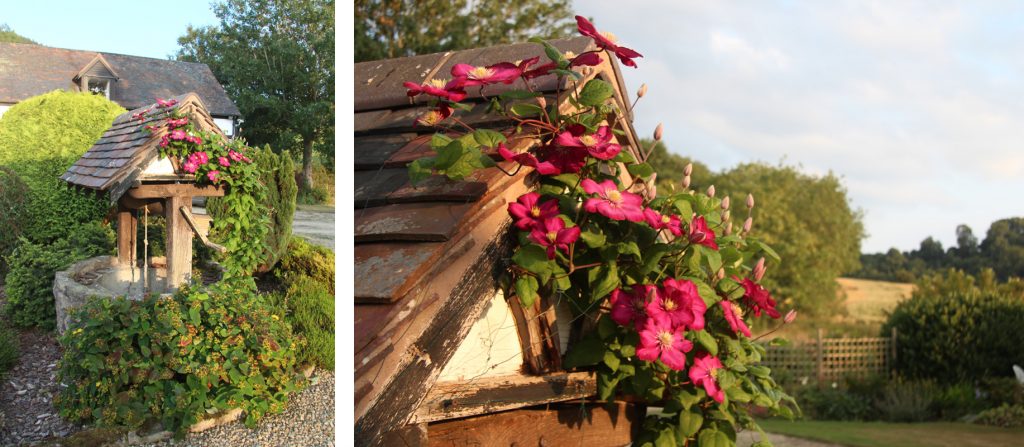
What was a rather unattractive bed prominently visible from all the rooms of the house has been transformed into a bed with a mix of small shrubs and perennials with plenty of room for colourful annuals to put on a summer display. Objective achieved.

